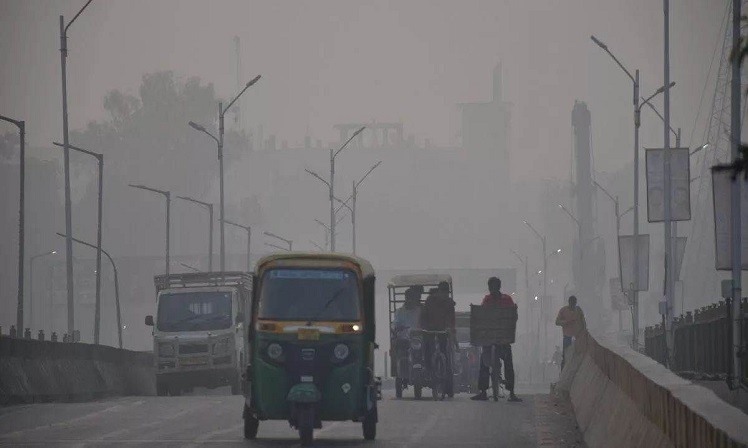
Image Source: Agencies
A layer of mist, extending from Punjab to West Bengal, and brought down perceivability over the Indo-Gangetic fields beginning from Thursday night are influencing street and rail traffic, authorities said on Friday.
Satellite symbolism showed mist creating over pieces of Punjab, Haryana, north Rajasthan and west Uttar Pradesh beginning at 8 pm on Thursday.
An authority at the India Meteorological Division (IMD) expressed thick to exceptionally thick haze covered pieces of Punjab, Rajasthan, Haryana, Delhi and Tripura. Moderate haze won in pieces of Uttarakhand, east Uttar Pradesh, Bihar, Jharkhand and Odisha.
At 5.30 am, perceivability levels remained at no meter in Bathinda and Bikaner, 25 meters in Amritsar and Patiala, 50 meters in Ganganagar, Churu, Hisar, Palam, Safdarjung, Jaipur and Agartala, and 200 meters in Ambala, Dehradun, Sultanpur (east UP), Purnea, Bhagalpur, Ranchi and Jharsuguda.
A representative for the Indian Rail lines said 22 trains showing up in Delhi were deferred by up to six and a half hours because of the hazy climate.
The IMD revealed that the perceivability level dove to no meter at the Amritsar air terminal by 8 pm, while it suddenly dropped from 1,400 meters at 9.30 pm to 400 meters at 10 pm at the Palam Observatory, close to the Indira Gandhi Worldwide Air terminal.
It further dropped to 50 meters by 11.30 pm and to zero meter by 4.30 am, prior to improving to 300 meters by 7.30 am.
Early morning hazy climate in north and upper east India has vigorously affected street, rail and air traffic since the finish of December.
IMD researchers say the shortfall of dynamic western aggravations - - climate frameworks beginning in the Mediterranean area and bringing unseasonal precipitation to northwest India - - is the explanation for the blinding layer of haze persevering over the fields in northwest India since December 25.
For the most part, five to seven western aggravations influence the district during December and January. However, this colder time of year, there have not been any up until this point, they said.
The base temperatures have been under 4 degrees Celsius at many stations in the area from January 12 to 17.
This extreme weather conditions is because of primarily three reasons: absence of dynamic western unsettling influences over northwest India, winning El-Nino conditions, and a solid fly stream, they said.
Solid fly streams, which are groups areas of strength for of that by and large blow from west to east the whole way across the globe and effect climate, have been beating north India throughout the previous five days.
The IMD expressed "thick to extremely thick" mist conditions are probably going to beat north India for the following five days.
Leave a comment: (Your email will not be published)